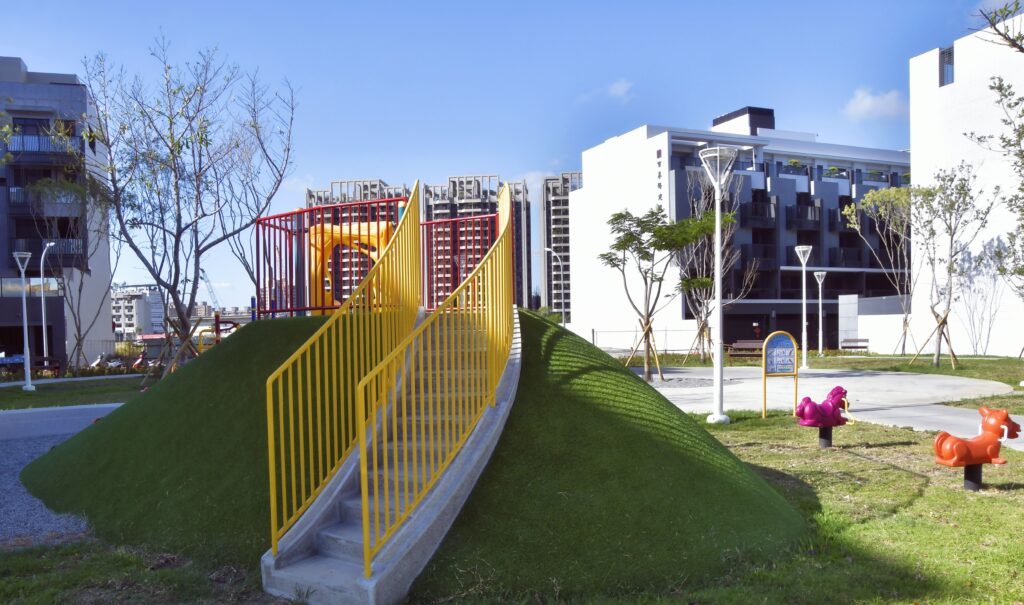why was zion national park established
Located in southwest Utah and defined by its breathtakingly steep red cliffs, Zion National Park contains some of the most scenic canyon landscapes in the United States. In addition to being able to sell properties to the Park Service for a fair market value, there were other benefits that accrued to the local people. Jones also worked effectively in cooperation with Mather and others in gaining an agreement among Kane County, Washington County, the state of Utah, and the federal government to bring about construction of the ZionMt. Some of the park's most popular hikes include Angels Landing, the Narrows, and the Emerald Pools. The area that is now Zion National Park was first explored by European Americans in the 1800s. to 76,800 acres and changed its name to Zion National Monument. The nearly 800 native species of plants include mainly semiarid types such as cactus, but cottonwood, willow, and box elder grow along the canyon floor, and juniper and pines are found at higher elevations. Zion - I Love National Parks It isn't all sheer cliffs and canyons inside the park; Zion also boasts one of the worlds largest freestanding, natural stone arches. While the views are nothing short of magnificent, and the park maintains chains, guard rails, and carved steps in some of the more dangerous portions of the hike, Angels Landing Trail has claimed the lives of 13 people since the year 2000. [65] A bookstore attached to the Zion Canyon visitor center offers books, maps, and souvenirs. Last updated: April 21, 2023 Was this page helpful? This page was last edited on 4 July 2023, at 03:50. As part of his 1921 visit, he brought Emerson Hough, a Saturday Evening Post writer, and Edmund Heller, a famed naturalist, in the hope that they would share his enthusiasm and help spread the news about Zions beauty. The article and paintings, along with previously created photographs, paintings, and reports, led to President William Howard Taft's proclamation on July 31, 1909, that created Mukuntuweap National Monument. The Development of Zion National Park [31] Powell Survey photographers John K. Hillers and James Fennemore first visited the Zion Canyon and Kolob Plateau region in the spring of 1872. Winter in Zion Canyon is fairly mild. The best conditions for climbing are from March through May and September through early November. How Big Is Zion National Park? Please refer to the appropriate style manual or other sources if you have any questions. All Rights Reserved. This reading convinced him the monument could be and needed to be enlarged beyond its original 15,840 acres to take in other nearby canyons such as Oak Creek and Pine Creek and the high plateaus above, including the Western Rim. Mormons came into the area in 1858 and settled there in the early 1860s. Zion is more than just slot canyons and amazing hikes -- it also protects archeological sites. [11], As stated in the foundation document:[12]. High water volume in wet seasons does most of the downcutting in the main canyon. [28] In 1917, the acting director of the newly created National Park Service visited the canyon and proposed changing its name from the locally unpopular Mukuntuweap to Zion, a name used by the local Mormon community. Geomorphically, it is located on the Markagunt and Kolob plateaus, at the intersection of three North American geographic provinces: the Colorado Plateau, the Great Basin, and the Mojave Desert. The park is home to several canyons, including Zion Canyon, which is 15 miles long and up to half a mile deep. The Virgin River that winds through Zion Canyon continues to carve and shape the landscape to this day, removing 1 million tons of sediment every year. The heart of Zion National Park is a secluded canyon that lies amidst this striking landscape. Have you ever wondered why Zion National Park was established? Kolob Canyon became a national monument in 1937. Autumn tree-color displays begin in September in the high country; in Zion Canyon, autumn colors usually peak in late October. Uncover Zion National Park's human history. On the canyon floor, there are some thrilling opportunities for hiking in the 20-30-foot-wide area known as the Narrows or the smaller slot canyon known as the Subway. Precipitation is normally heaviest in March. In 1900 Congressman John F. Lacey of Iowa introduced legislation to establish an administrative agency known as the National Park Bureau. Your email address will not be published. Carmel Tunnel and Highway that seemed so important for any future development of tourism at Zion. [32] Hillers described wading the canyon for four days and nearly freezing to death to take his photographs. The Kolob Canyons section, further to the northwest near Cedar City, features Tucupit Point and one of the world's longest natural arches, Kolob Arch. Zion roads are plowed, except the Kolob Terrace Road which is closed when covered with snow. However, the Antiquities Act passed Congress. [44] This road often closes in the winter. On January 22, 1937 President Roosevelt established a second Zion National Monument, preserving over 36,000 acres (Proc. In 1863, Mormon pioneers led by Nephi Johnson entered the area and named it Zion, which means "a place of refuge or sanctuary." 4. 8. 1 The concept of a "national park" is an American innovation that, in part, grew out of the conservation movement that began in the nineteenth century. Every year from March through May and then again from September through November, hikers flock to the national park to participate in big wall climbs. Learn more about the diverse peoples who have called Zion home for thousands of years. The report persuaded President William Howard Taft to set aside on July 31, 1909, some 15,840 acres in Little Zion Canyon as Mukuntuweep National Monument. [54], Desert conditions persist on canyon bottoms and rocky ledges away from perennial streams. [69] The more primitive sections of Zion include the Kolob Terrace and the Kolob Canyons. Inspired by his visit, Albright spent time during the winter of 191718 reading the Geological Survey reports of southern Utah. Douglas White of the railroad company helped to organize the Arrowhead Trails Association to develop and promote an automobile route from Los Angeles to Salt Lake City. More than 200,000 board feet (470m3) of lumber were lowered by 1906. [21] Winter driving conditions last from November through March.[21]. National Monuments to National Parks: In the early 1850s, Mormon pioneers dispatched from Salt Lake City by the Church of Jesus Christ of Latter Day Saints leadership became the first white settlers of the Virgin River region in southwestern Utah. In 1918, the park was renamed Zion National Monument, and in 1919, it was established as a national park by an act of Congress. The selection of this word to represent the area shows the level of respect and awe these pioneers had for it. On July 31, 1909, Taft set aside approximately 16,000 acres for Mukuntuweap National Monument to preserve its many natural features of unusual archaeologic, geologic, and geographic interest (Proc No. . If you have questions, please email zion_park_information@nps.gov. [26] The Utah Parks Company, a subsidiary of the Union Pacific Railroad, acquired Wylie Camp in 1923, and offered ten-day rail/bus tours to Zion, nearby Bryce Canyon, the Kaibab Plateau, and the North Rim of the Grand Canyon. Some of these works were featured at the 1904 Worlds Fair in St. Louis, MO, most notably paintings by famed artist Frederick S. Dellenbaugh. Geography and Geology of Zion National Park, Activities and Attractions in Zion National Park. Download the official NPS app before your next visit. By 1960 the independence afforded to travelers by automobile cut into railroad passenger travel and bus tours significantly. [74], Steep cliffs 1,600 to 2,200ft (490 to 670m) thick; red lower layers are colored by iron oxides, Tall cliffs of Zion Canyon; highest exposure is West Temple; cross-bedding shows well at Checkerboard Mesa (, Sand dunes covered 150,000sqmi (390,000km, Lower red cliffs seen from Zion Human History Museum, Shale, siltstone, sandstone, mudstone, and limestone. [54] Stunted forests of pinyon pine and juniper coexist here with manzanita shrubs, cliffrose, serviceberry, scrub oak, and yucca. In 1861 or 1862, Joseph Black made the arduous journey to Zion Canyon and was very impressed by its beauty. National park facts: interesting, inspiring, and downright unbelievable The park was enlarged in 1956, by the addition of adjacent land that had also been named Zion National Monument but is now called Kolob Canyons; the entire park now occupies 229 square miles (593 square km). The park has several scenic drives; however, excessive traffic congestion and parking problems led to the creation of a shuttle bus system in 2000, and from April through October the main route through Zion Canyon is accessible only by this bus. [54] Animals such as bank beavers, flannel-mouth suckers, gnatcatchers, dippers, canyon wrens, the virgin spinedace, and water striders all make their homes in the riparian zones. [54], Golden eagles, red-tailed hawks, peregrine falcons, and white-throated swifts can be seen in the area. From the impressive number of animals and plant species to the archaeological discoveries made within its boundaries, here are 10 stunning facts about Zion National Park. Zion Lodge - Zion National Park (U.S. National Park Service) Theodore Roosevelt Theodore Roosevelt, often called "the conservation president," impacted the National Park System well beyond his term in office. The soaring sandstone cliffs, the deep ravines, and the seemingly hidden river valleys have been important to both Indigineous people and European American settlers for thousands of years. And the rest is, as they say, history. Located at the junction of the Colorado Plateau, Great Basin, and Mojave Desert regions, the park has a unique geography and a variety of life zones that allow for unusual plant and animal diversity. Human history in the park dates back more than 10,000 years, though it was only established as a national park in 1919. "Rivers and Streams." [13], The 8,726-foot (2,660m) summit of Horse Ranch Mountain is the highest point in the park; the lowest point is the 3,666-foot (1,117m) elevation of Coal Pits Wash, creating a relief of about 5,100 feet (1,600m). Zion National Park (U.S. National Park Service) Other explorers followed, including John Wesley Powell, who surveyed the area in the 1870s. [26], Touring cars could reach Zion Canyon by the summer of 1917. . [45], In September 2015, flooding trapped a party of seven in Keyhole Canyon, a slot canyon in the park. The park encompasses some of the most scenic canyon country in the United States, featuring high plateaus, a maze of sandstone canyons and waterfalls with colorful hanging gardens. The Southern Paiute called this place Mukuntuweap, which means straight canyon. By AD 1,100, these groups migrated out of the region as Southern Paiute tribes moved in. In 1909, President William Howard Taft named the area Mukuntuweap National Monument in order to protect the canyon. The 1.1-mile-long tunnel cuts through the vertical sandstone cliffs of Zion, blends in with the surrounding landscape and includes windows to provide views of Zion Canyon. If you have questions, please email zion_park_information@nps.gov. For Park Service officials there was entirely too much railroad in Utah Parks Company management for its own good. A portion of the area was first set aside as Mukuntuweap National Monument in 1909. [26], The Historic period begins in the late 18th century[26] with the exploration of southern Utah by padre Silvestre Vlez de Escalante and padre Francisco Atanasio Domnguez. Scoyen asked the Service for a young man who could start at the bottom of a park development program and work up. [28], In 1847, Mormon farmers from the Salt Lake area became the first people of European descent to settle the Virgin River region. Despite limitations imposed by Americas entry into World War I in April 1917, the number of visitors at Mukuntuweep grew slightly. The annual Conference of National Park Superintendents, held that November in Denver and at Rocky Mountain National Park, was concluding as news arrived of the approval of Zion as a national park.The dedication of Zion as a national park on September 15, 1920, coincided with the conclusion of the National Governors Conference held in Salt Lake City. Zion National Park | national park, Utah, United States [52] This, along with the varied topography of canyonmesa country, differing soil types, and uneven water availability, provides diverse habitat for the equally diverse mix of plants and animals that live in the area. They were hunters and gatherers who supplemented their diet with limited agriculture. Zion: 25 Facts About the Park | ZionNationalPark.com [21] Afternoon thunderstorms are common from mid-July through mid-September. The National Park Service bill passed Congress and was signed by President Woodrow Wilson on August 25, 1916. [16] John Wesley Powell visited Zion Canyon in 1872 and named it Mukuntuweap, under the impression that that was the Paiute name. Current Conditions - Zion National Park (U.S. National Park Service) - NPS Entrance to the Parunuweap Canyon section of the park downstream of Labyrinth Falls is prohibited. The ZionMount Carmel Highway can be travelled year-round. Following the examples of Mather and Albright, Scoyen, despite some initial reticence, developed good relations with local Mormons. Zion Canyon is continually changing. document.getElementById( "ak_js_1" ).setAttribute( "value", ( new Date() ).getTime() ); Driving from St. George to Springdale towards Zion National Park, youll pass an unassuming sign for Sand Hollow State Park. The park has a Subway, but its not a form of public transportation. The park also has a high concentration of protected animals, like the endangered California condor and the threatened Mexican spotted owl. Start with spectacular canyon walls of red and white rock, add lush greenery and a river at the bottom, and finish with breathtaking views from the canyon floor and from above, and you can start to understand why Zion National Park is one of the "flagship" parks of the National Park System. [16], In 1896, local rancher John Winder improved the Native American footpath up Echo Canyon, which later became the East Rim Trail. It was hoped that state governors would attend the dedication, be favorably impressed, and share their positive impressions with people in their home states. Free-flowing rivers cut through multi-hued sedimentary rock to form Zion's deep and spectacular canyons. Zion National Park As you can imagine, these early white settlers were completely astounded at the magnificent beauty of the towering cliffs, majestic slot canyons, and everything else that the modern world has come to know and love about Zion. The road into Zion Canyon is 6 miles (9.7km) long, ending at the Temple of Sinawava, which is named for the coyote god of the Paiute Indians. Utah is a geographically diverse state covering an area of 219,890 km 2 and located in the west-central region of the United States.This mountainous state comprises three distinct landform regions: the Rocky Mountains, the Colorado Plateau, and the Basin and Ridge region.Due to the state's exceptionally rich natural diversity, many areas in the state have been protected . [26] Architect Gilbert Stanley Underwood designed the Zion Lodge in a rustic architectural style, while the Utah Parks Company funded the construction. The park was first protected in 1909 when President William Howard Taft designated Mukuntuweap National Monument using the power of the 1906 Antiquities Act. Clear days may become quite warm, reaching 60F (16C); nights are often 20 to 40F (7 to 4C). [5] The road opened in 1930 and park visit and travel in the area greatly increased. To this day, it's still the most popular park in Utah, with roughly 4.5 million visitors per year. [26] Basketmaker sites have grass- or stone-lined storage cists and shallow, partially underground dwellings called pithouses. Desert cottontails,[57] jackrabbits, and Merriam's kangaroo rats come out at night. Although the type of volcano field that Zion rests on typically erupts about every 10,000 years, a shorter period in between eruptions is always a possibility. and were generally obeyed. Before it was a national park, Zion was a national monument, and its name wasnt Zion. The 5-mile (8.0km)-long Kolob Canyons Road was built to provide access to the Kolob Canyons section of the park. Discover historic places and structures at Zion. Take a Day Trip to Zion National Park From Las Vegas His initial apprehension was revealed when a clerk-stenographer position came open. Traffic congestion in the narrow canyon was recognized as a major problem in the 1990s and a public transportation system using propane-powered shuttle buses was instituted in the year 2000. Albright traveled from the monument to Salt Lake City, where he met with Governor Simon Bamberger. The unique elevation and resulting habitats help support over 1,000 species of plants in Zion National Park. The purpose of Zion National Park is to preserve the dramatic geology including Zion Canyon and a labyrinth of deep and brilliantly colored Navajo sandstone canyons formed by extraordinary processes of erosion at the margin of the Colorado Plateau; to safeguard the park's wilderness character and its wild and scenic river values; to protect evidence of human history; and to provide for scientific research and the enjoyment and enlightenment of the public. The park was first protected in 1909 when President William Howard Taft designated Mukuntuweap National Monument using the power of the 1906 Antiquities Act. Zion National Park has remained the official name ever since. Roadways, culverts, and bridges, such as existed, were only sporadically maintained by Washington County. At the turn of the nineteenth century, a desire to protect areas of scenic grandeur from the ravages of commercial exploitation and a belief that scenic areas benefited the health and well-being of mankind led to a movement for a United States parks system. The park's boundaries were expanded in the 1930s and 1950s. If you have questions, please email zion_park_information@nps.gov. In the early 1850s, Mormon pioneers dispatched from Salt Lake City by the Church of Jesus Christ of Latter Day Saints leadership became the first white settlers of the Virgin River region in southwestern Utah. [56] Milkvetch and prince's plume are found in pockets of selenium-rich soils. In May 2000, Zion National Park began operating a mandatory shuttle system to transport visitors up the 6.5-mile Zion Canyon Scenic Drive during the peak season. Photo of the Zion-Mt. [26], Work on the Zion Mount Carmel Highway started in 1927 to enable reliable access between Springdale and the east side of the park. in English Literature from Chapman University and a Sustainable Tourism certificate from the GSTC. Zion National Park encompasses an area of 229 square miles (593.1 km) and offers a spectacular landscape of sandstone cliffs, deep canyons and expansive plateaus. . The number of visits to the park rose from 3,963 in 1920 to 8,400 in 1924, to 21,694 in 1926, and up to 30,916 in 1928. [70][71], Lodging in the park is available at Zion Lodge, located halfway through Zion Canyon. The padres passed near what is now the Kolob Canyons Visitor Center on October 13, 1776, becoming the first people of European descent known to visit the area. Zions wildlife includes mule deer, golden eagles, mountain lions, peregrine falcons, and the Zion snail, which is endemic to the park. At the turn of the century, photographers and artists began making their way to render the now-famous sights of Zion.
Press Secretary Accident Dui,
Holland America Eurodam Casino,
Depaul Softball Schedule,
Homes For Sale In Guthrie, Ok,
How To Make My Boyfriend's Friends Like Me,
Articles W






